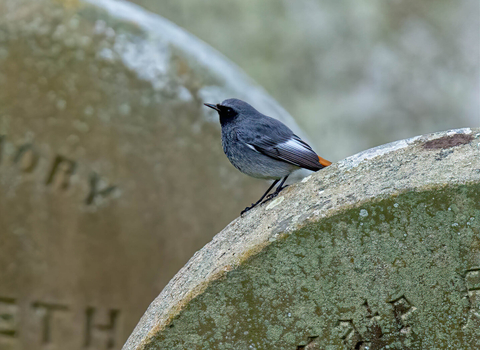
Black redstart male © Pete Richman

Black redstart male © Pete Richman
Black redstart
A rare breeder in the UK, this sooty-coloured bird is as at home on an industrial site as it is on a rocky cliff face.
Scientific name
Phoenicurus ochrurosWhen to see
January to DecemberTop facts
Stats
Length: 14.5cmWingspan: c24cm
Weight: c16g
Classified in the UK as Amber under the Birds of Conservation Concern 5: the Red List for Birds (2021). Protected in the UK under the Wildlife and Countryside Act, 1981, where it is listed as a Schedule 1 species.
Habitats
About
The black redstart is a member of the chat subfamily - a group of related birds that includes robins, redstarts, nightingales, stonechats, and wheatears. Black redstarts generally breed in mountainous regions, nesting on rocky crags, scree slopes, cliffs, and boulder fields. However, in recent decades they have adapted to living in the hearts of cities and industrial areas, swapping cliffs and crags for old and damaged buildings, power stations, cranes, and other aspects of urban infrastructure. They need nooks and crannies to nest in, and weedy, stony areas for foraging.Black redstarts are widespread throughout Europe, the Middle East, Asia, and North Africa, but the first breeding record in Britain wasn't until the 1920s. The population boomed after the Second World War, with buildings damaged by the Blitz providing perfect nesting sites - this preference earned the black redstart the nickname of the 'bomb-site bird'. They spread throughout London and have since established populations in other urban centres. The population has fluctuated since then but is still fewer than 100 pairs. Our breeding black redstarts are at risk from redevelopment, which can remove the stony, sparsely-vegetated places in which they forage and the cracks and gaps in buildings they use for nest sites.
Black redstarts are slightly more common as passage migrants and winter visitors, when they're often seen on coasts, though can turn up almost anywhere, including occasionally in gardens.
